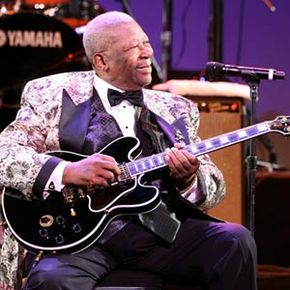Everyone knows why B.B. King sings the blues, but unless you know your way around a guitar, you probably don't know how he plays them. It all starts with something called the 12-bar blues. Almost all blues songs are written in this progressive scale, which mimics the call and response vocal tradition of African-American slaves in the Deep South.
When W.C. Handy created the first certifiable blues hit, he used the 12-bar blues. Released to the public in 1914, "St. Louis Blues" was initially met with a lukewarm response [source: Morgan]. By the 1930s, however, people all over the country could identify with the genre's theme, regardless of race. African-American artists such as Billie Holiday substantially changed popular culture and helped the blues become a permanent part of the American musical landscape. In the latter half of the 20th century, B.B. King pioneered the role of the lead guitar player and used the 12-bar blues in new and unique ways. He, along with other blues artists, helped transform the genre from an American movement into a global musical phenomenon.
Advertisement
Today, the 12-bar blues is one of the most basic and essential chord progressions in any guitar player's repertoire. If you are a novice player, or would just like to freshen up on the basics, this instructional series from iVideosongs is a great place to start. You probably won't be ready to pen the next "The Thrill Is Gone" after watching, but learning this technique will undoubtedly help you become a better player.
Advertisement



